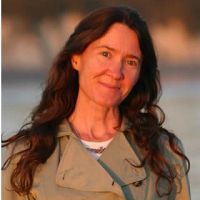Heckman & Tague, 2017
How soil water storage moderates climate changes effects on transpiration, across the different climates of the Critical Zone Observatories
Heckman, C.; Tague, C. (2017)
Fall Meeting, American Geophysical Union, December 2017. Abstract H23H-1777. Cross-CZO National
-
Boulder, UNDERGRAD
-
Sierra, INVESTIGATOR
Abstract
While the demand side of transpiration is predicted to increase under a warmer climate, actual evapotranspiration (AET) will be moderated by the supply of water available to vegetation. A key question to ask is how will plant accessible water storage capacity (PAWSC) affect the partitioning of precipitation between AET and runoff. Our results indicate that whether AET increases or decreases, and how much, is significantly based upon interactions between PAWSC and characteristics of precipitation such as the amount, frequency, and skew as well the partitioning between rain and snow. In snow dominated climates, if PAWSC cannot make up for the loss of storage as snowpack then AET could decrease, and in rain dominated climates, PAWSC could significantly limit the increase in AET. These results highlight the importance of critical zone research: constraining PAWSC is critical in predicting not only the magnitude but also the direction of the change in AET with climate warming. Due to the highly heterogeneous nature of PAWSC and the difficulty of measuring it across large scales, we use a well-tested hydrologic model to estimate the impacts from a range of PAWSC on the partitioning of precipitation between runoff and AET. We completed this analysis for the range of precipitation and vegetation characteristics found across 9 of the Critical Zone Observatories.
Citation
Heckman, C.; Tague, C. (2017): How soil water storage moderates climate changes effects on transpiration, across the different climates of the Critical Zone Observatories. Fall Meeting, American Geophysical Union, December 2017. Abstract H23H-1777..
Explore Further

